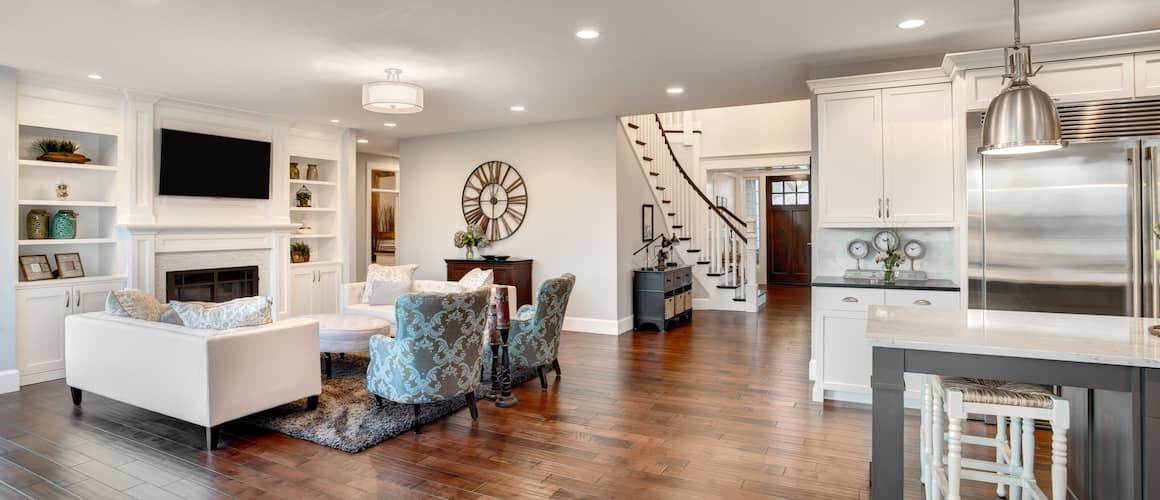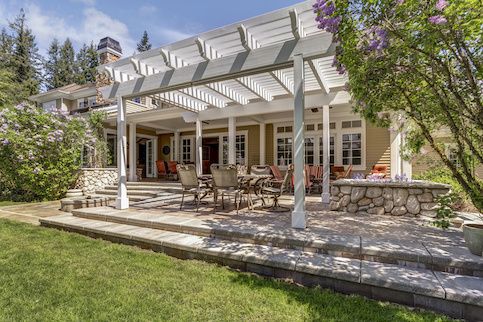When choosing a loan product with a variable interest rate, you can expect the rate you pay to swing up and down. But how far it can fall is limited by the interest rate floor, which indicates how low a variable interest rate can go.
Let’s take a closer look at interest rate floors and how this number will impact you.
Find A Mortgage Today and Lock In Your Rate!
Get matched with a lender that will work for your financial situation.
Interest Rate Floor Definition
An interest rate floor, sometimes referred to as a “floor rate,” is the lowest rate you can receive from your lender on loans with a variable rate. These are often used in loan agreements to protect the lender’s investment in the event that market interest rates fall below a certain threshold.
When you take out a floating rate loan, it’s typically tied to an economic index. For example, LIBOR (London Interbank Offered Rate) is a benchmark used around the world.
An interest rate floor also protects investors who buy derivatives, which are financial contracts that base value on an underlying interest rate. With an interest rate floor in place, the investor can prevent their rate of return from dropping below a certain amount.
Interest Rate Floor And Cap: What’s The Difference?
In contrast to an interest rate floor, an interest rate cap limits how much it can rise on a variable loan. Sometimes, a cap is called an interest rate ceiling.
In combination, an interest rate floor and interest rate cap credit an interest rate collar that limits the upward and downward swings.
When compared to a fixed-rate loan, variable rate loans come with some risk. But when an interest rate collar is in place, that can limit the risk for both borrowers and investors.
See What You Qualify For
Buy A Home
Discover mortgage options that fit your unique financial needs.

Refinance
Refinance your mortgage to have more money for what matters.
Tap Into Equity
Use your home’s equity and unlock cash to achieve your goals.
How Does An Interest Rate Floor Work?
Interest rate floors are written into loan agreements to protect the interests of the lender.
In a falling interest rate environment, lenders don’t want to be stuck losing money on the loan. They set a limit to exactly how far your interest rate can fall. As a borrower, you might want to see that rate drop even lower. But the interest rate floor will remain firm.
So, how does an interest rate floor impact adjustable-rate mortgages (ARMs)? The interest rate floor is specified in the contract you sign at closing. With that document in place, the borrower will never see their interest rate drop below that floor. And the lender doesn’t have to worry about losing money on their investment.
But interest rate floors play out in a similar way in a derivative contract. The interest rate floor will be specified in the contract. With that, the lender and investor are on the same page about how low the interest rate can go.
Interest Rate Floor Example
Now you know what a floor rate means. But the concept can be a little hazy until you see an example. The best way to learn about an interest rate floor is to see how this financial detail would work in real life. Let’s take a closer look at two different examples.
ARM Interest Rate Floor
Let’s say that you compare rates with different lenders and decide to go with a 5/1 ARM. When you take out a variable rate loan with this structure, the interest rate will remain the same for the first 5 years of your loan. After that, the ARM will adjust your interest rate for the duration of the term.
When you take out the loan, you agree to a 5% interest rate floor. As you come up on the 5-year mark, you discover that interest rates are sitting around 4%. But since you’ve agreed to the 5% floor, you’ll never see your rate drop below5%.
Ultimately, the interest rate floor means that you won’t save as much as you could when interest rates fall. But when accompanied by an interest rate cap, these safeguards can help prevent your mortgage payment from outgrowing your budget.
Lending Interest Rate Floor
Now, let’s look at this from the lender’s point of view. As a lender, you are structuring an ARM with a mortgage client. The home buyer wants a 5/1 ARM.
Based on the economic conditions of the day, you might decide that falling rates are a possibility. Since you don’t want to lose money on the loan, you stipulate a 5% floor rate in the contract. If the benchmark interest rate falls below 5%, you can still charge the client a 5% interest rate on their loan.
Typically, lenders are very interested in including an interest rate floor. The goal is to protect their investment from losing money if market interest rates fall too far.
The Bottom Line
If you are interested in an adjustable-rate home loan, finding one with both an interest rate floor and cap is critical. With this range of interest rates in mind, you’ll have an idea of how much you might have to pay monthly over the course of the loan. Although no one can predict the future of interest rates, you can at least lock in a range of interest rates that may work for your budget.
See What You Qualify For
You can get a real, customizable mortgage solution based on your unique financial situation.

Sarah Sharkey
Sarah Sharkey is a personal finance writer who enjoys diving into the details to help readers make savvy financial decisions. She’s covered mortgages, money management, insurance, budgeting and more. She lives in Florida with her husband and dog. When she's not writing, she's outside exploring the coast. You can connect with her on LinkedIn.












